
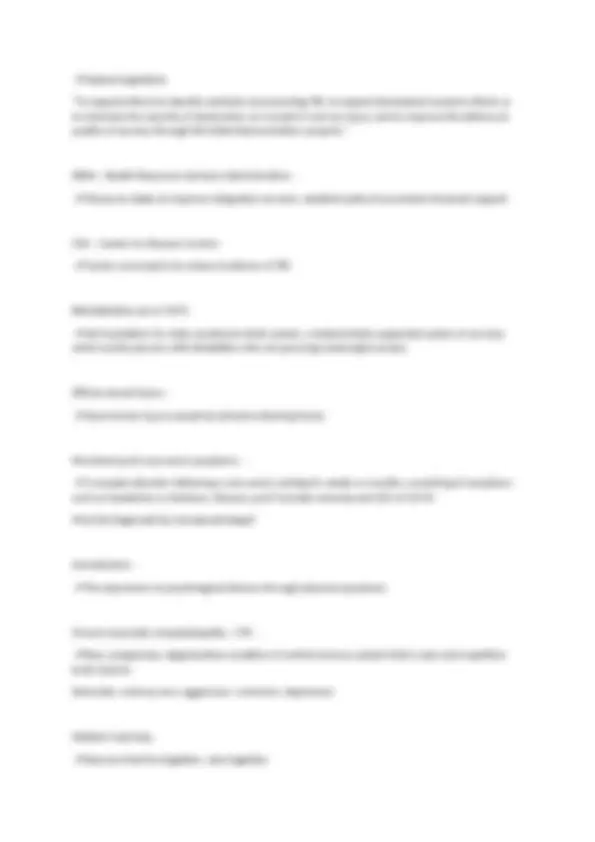
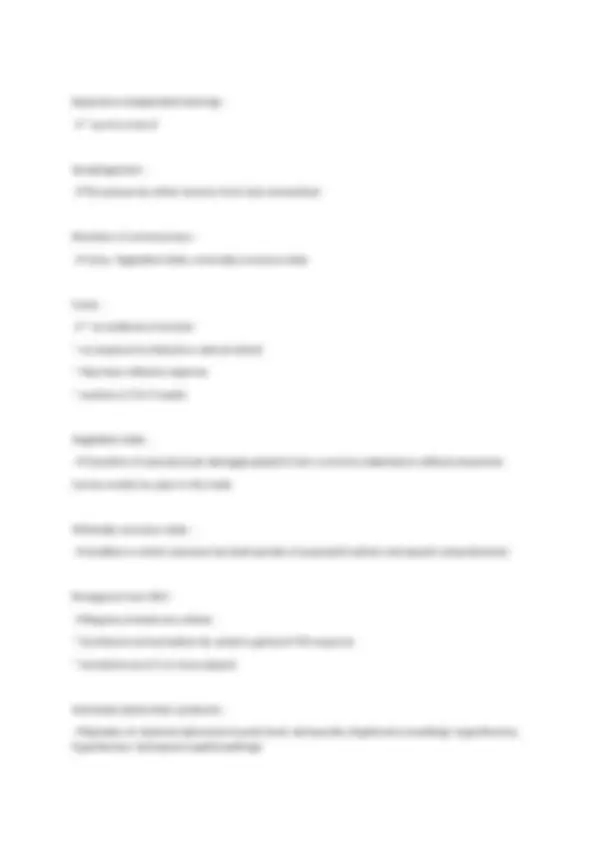
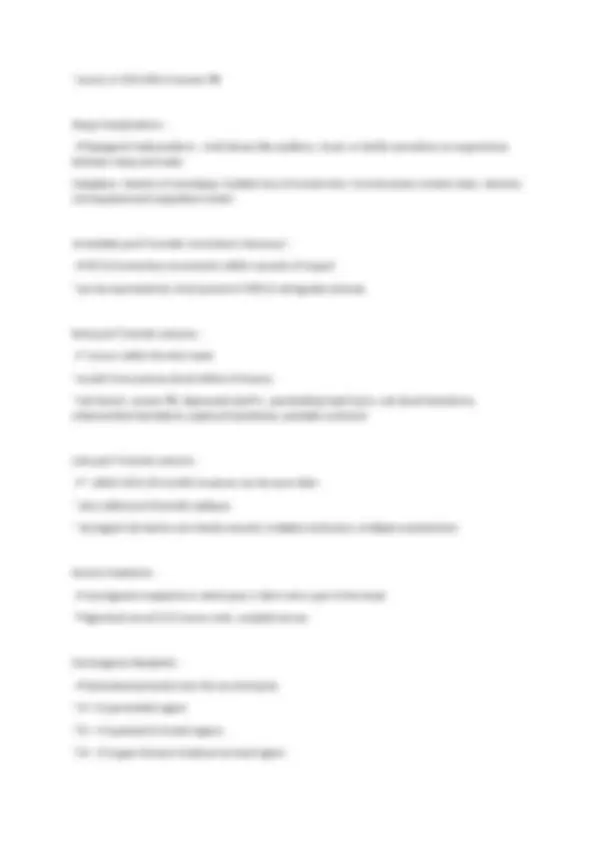
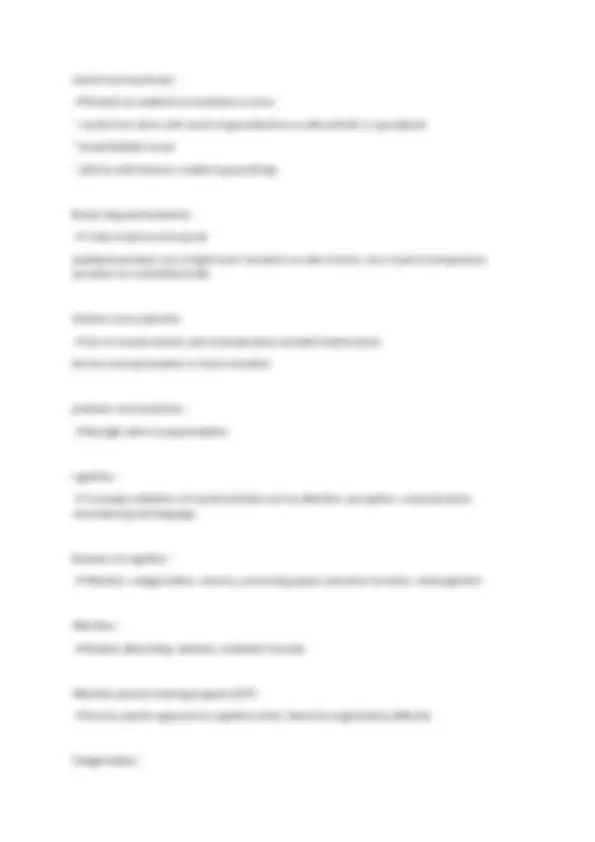
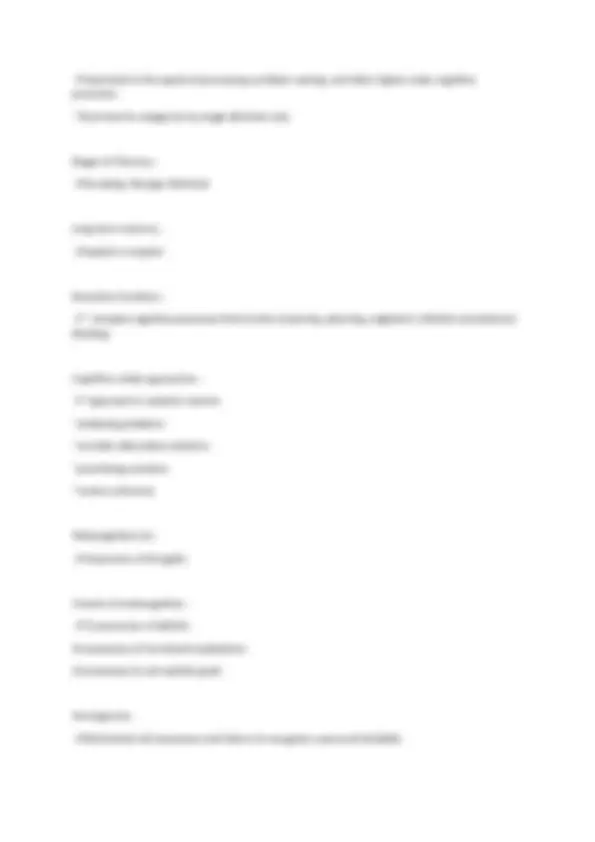
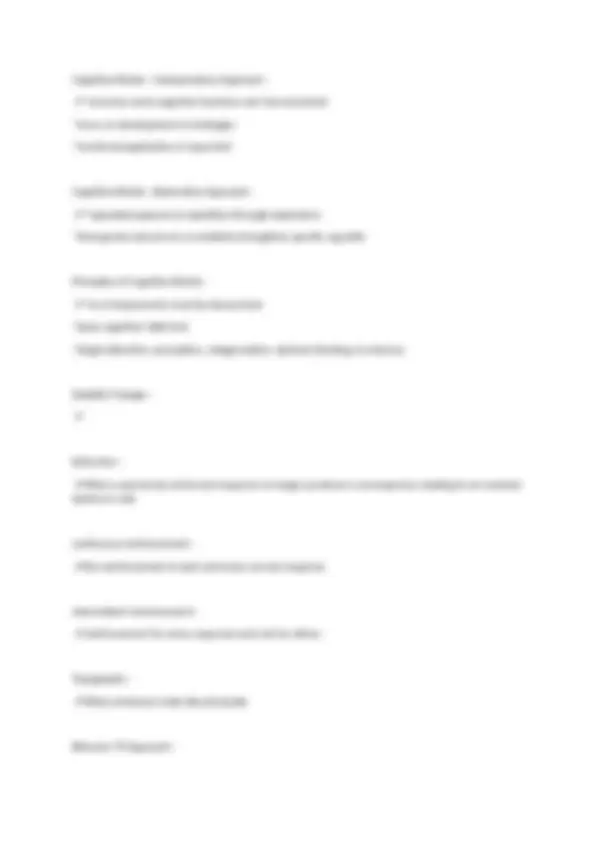
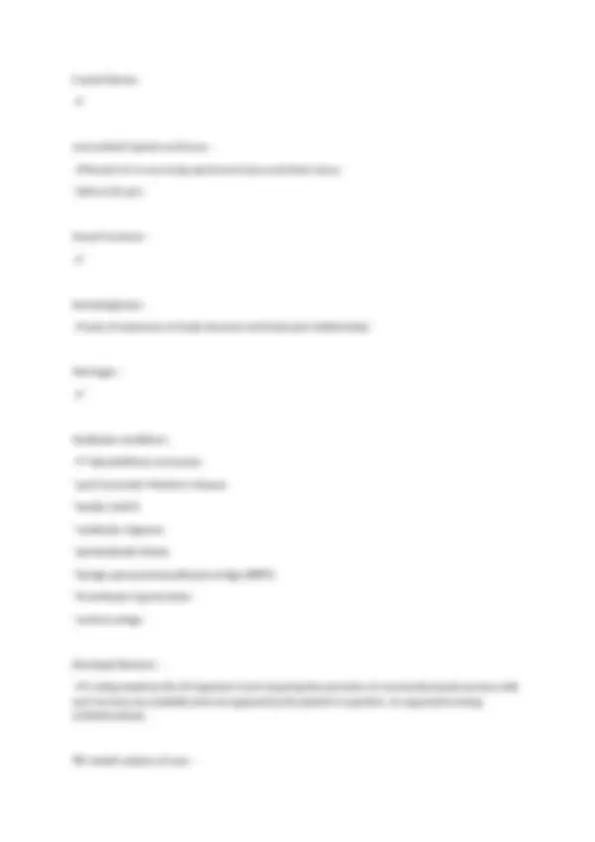
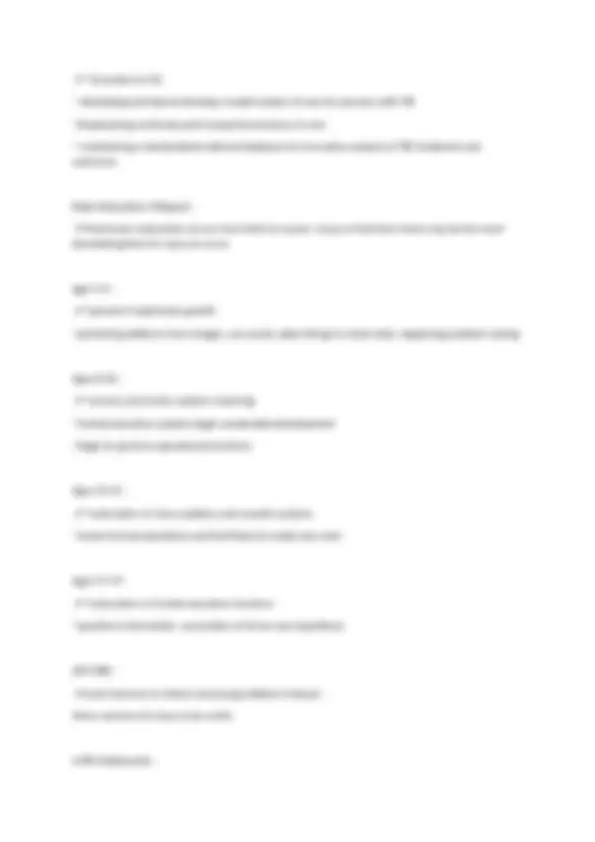
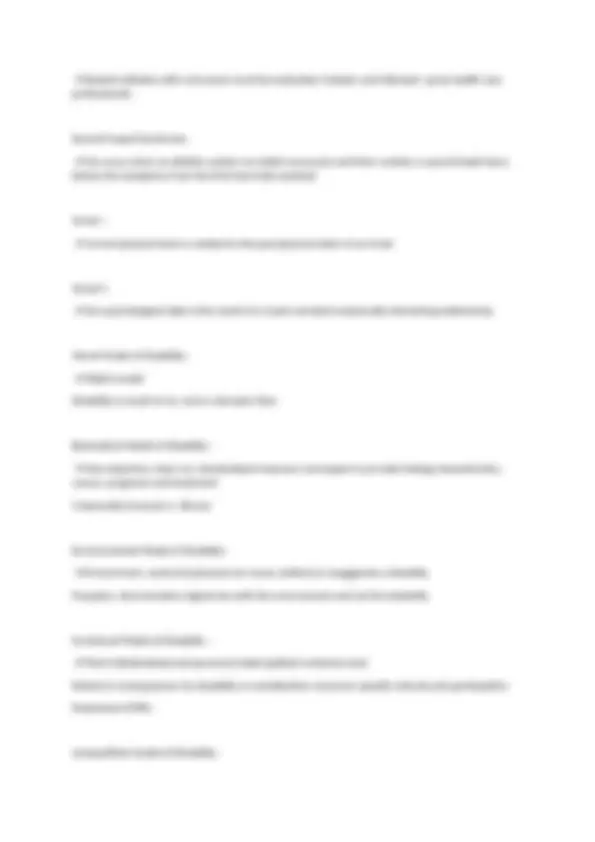
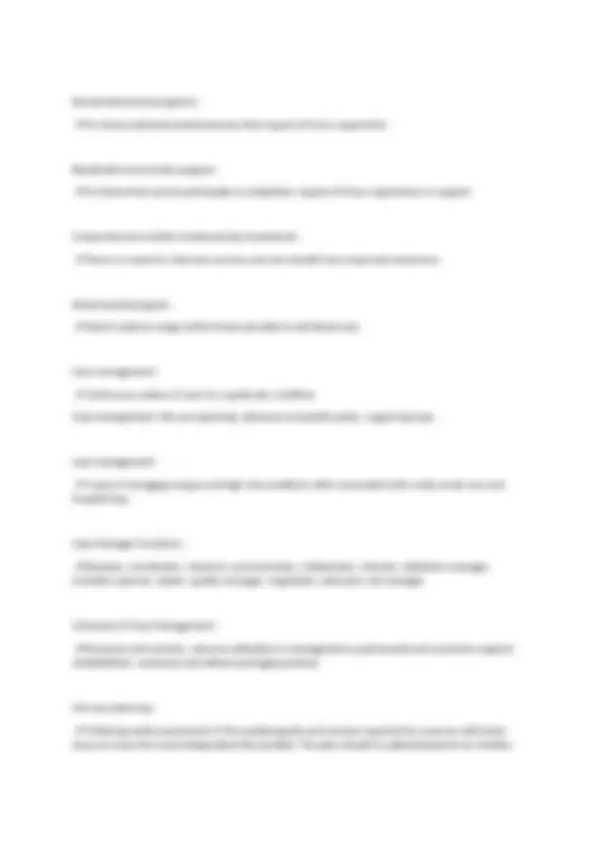

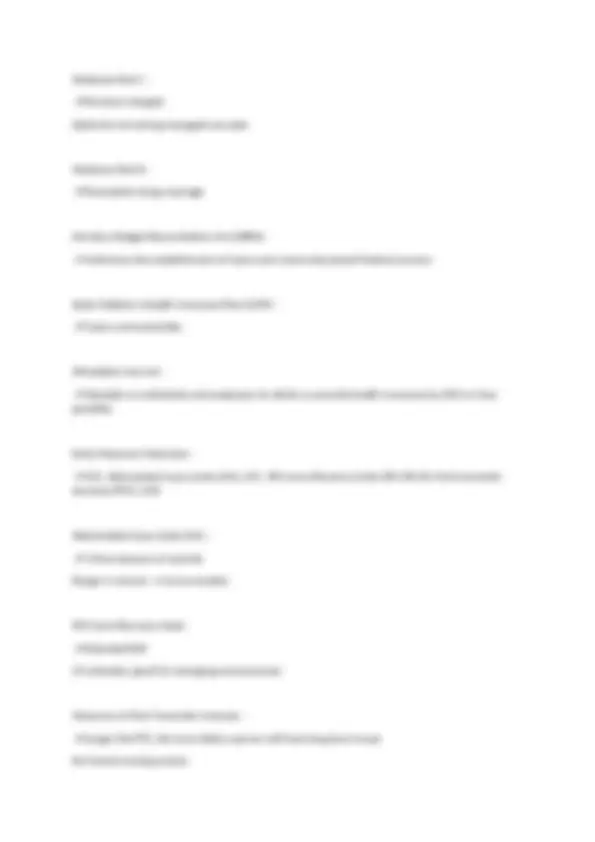
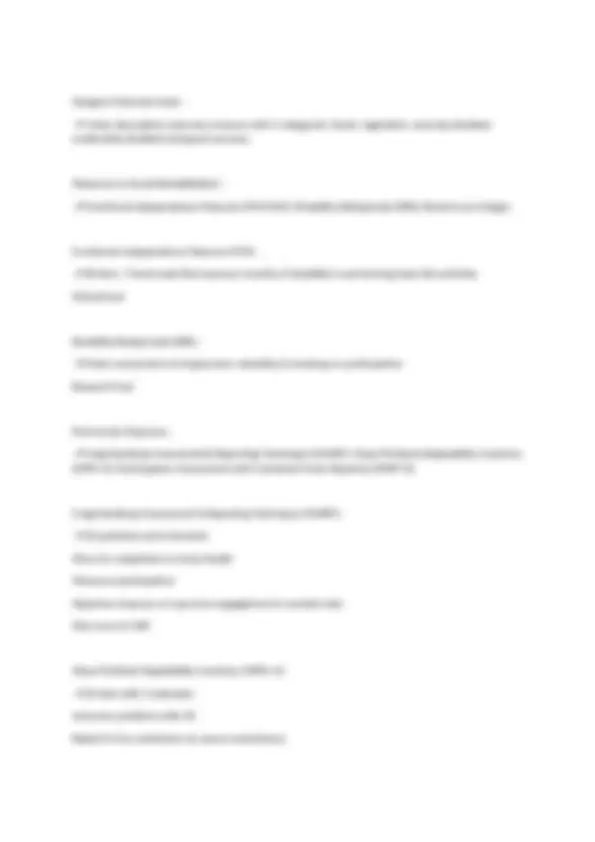
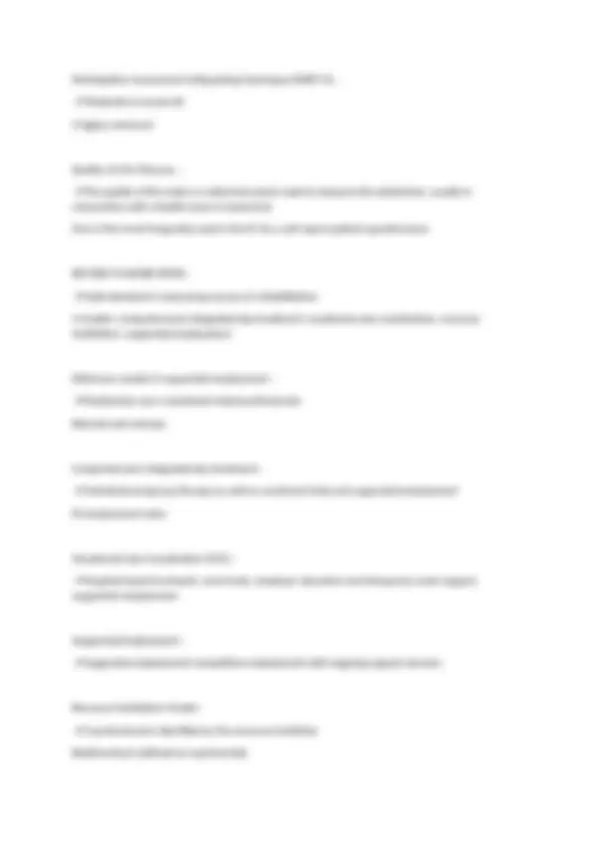
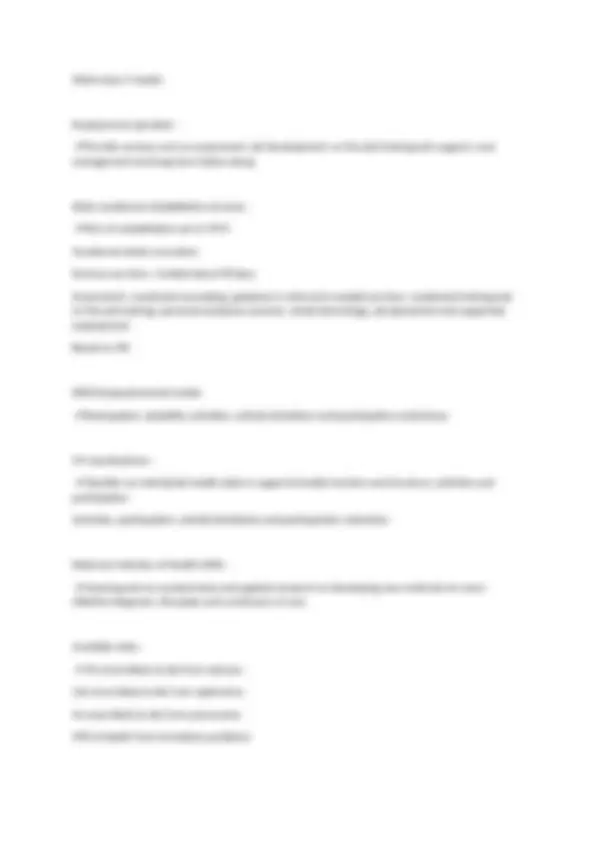
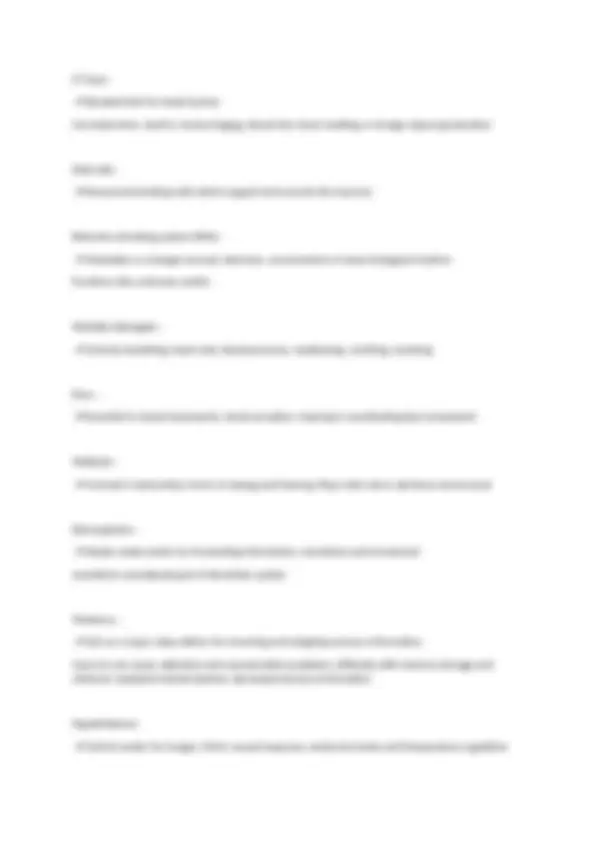
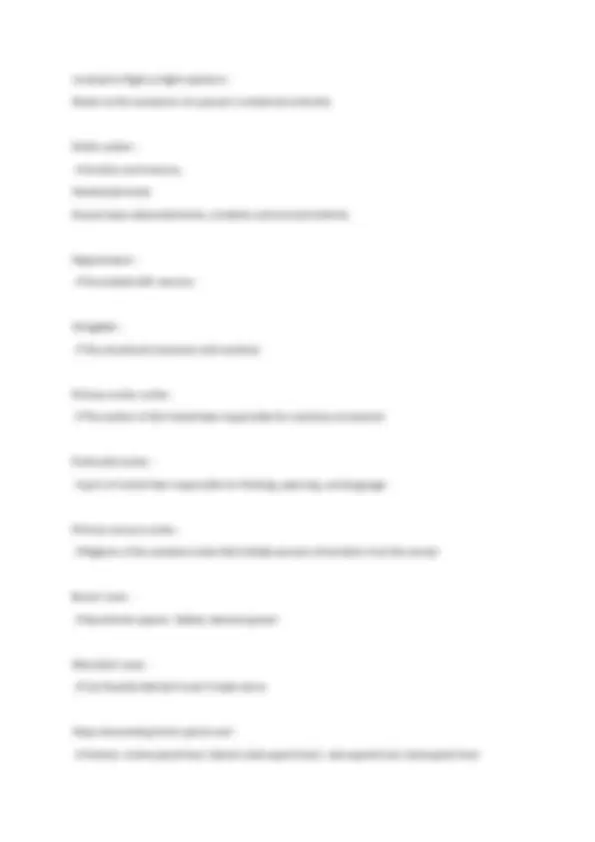
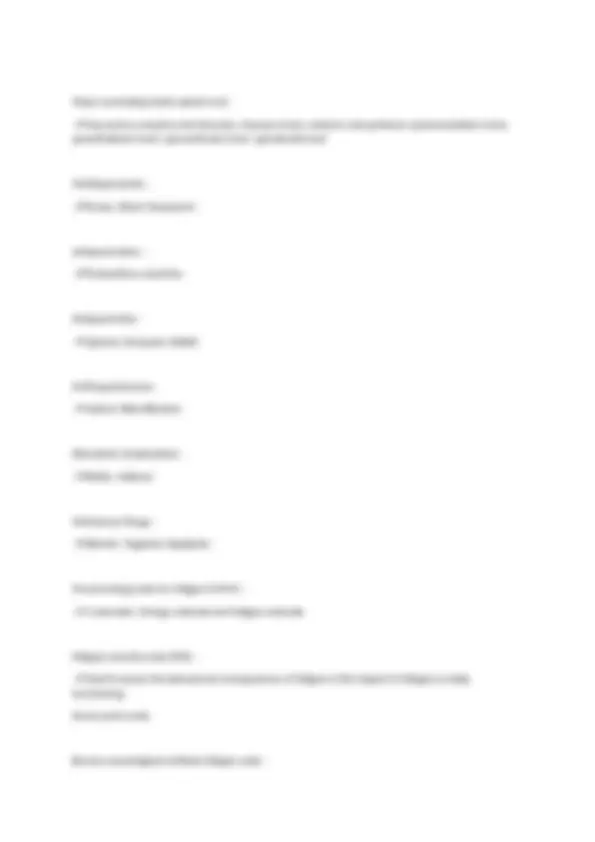
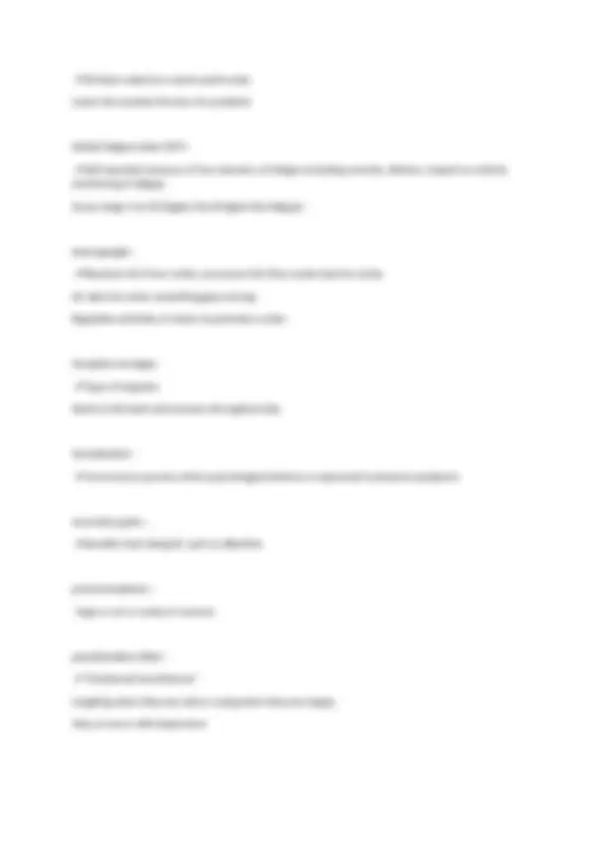



Study with the several resources on Docsity

Earn points by helping other students or get them with a premium plan


Prepare for your exams
Study with the several resources on Docsity

Earn points to download
Earn points by helping other students or get them with a premium plan
Community
Ask the community for help and clear up your study doubts
Discover the best universities in your country according to Docsity users
Free resources
Download our free guides on studying techniques, anxiety management strategies, and thesis advice from Docsity tutors
A comprehensive overview of traumatic brain injury (TBI), including immediate post-traumatic convulsions, early and late post-traumatic seizures, various types of headaches, pain, hydrocephalus, spasticity, heterotopic ossification, dysautonomia, infections, motor learning, cranial nerve dysfunction, movement disorders, agnosia, memory, executive functions, cognitive rehabilitation, metacognition, anosognosia, compensatory and restorative approaches, behavioral therapy, neuropsychology, dual diagnosis, mood disorders, and the impact of TBI on different age groups. The document also covers models of disability, vocational rehabilitation, the WHO biopsychosocial model, ICF classifications, and the role of the NIH in TBI research and treatment. Additionally, it provides information on mortality rates, CT scans, glial cells, the reticular activating system, and the functions of the medulla oblongata, pons, and midbrain.
Typology: Exams
1 / 28

This page cannot be seen from the preview
Don't miss anything!





















Acute Brain Injury - ✔An injury to the brain that is not hereditary, congenital, degenerative, or induced by birth trauma Traumatic Brain Injury - ✔An alteration in brain function, or other evidence of brain pathology, caused by an external force 2 Mechanisms *trauma impact
*normal CT or MRI any AMS at time of incident Moderate TBI - ✔LOC up to 24hrs *neuro signs of brain trauma
Experience independent learning - ✔" use it or lose it" Synaptogenesis - ✔The process by which neurons form new connections Disorders of consciousness - ✔Coma, Vegetative State, minimally conscious state Coma - ✔* no evidence of arousal
*occurs in 15%-33% of severe TBI Sleep Complications - ✔Hypogenic hallucinations - vivid dream like auditory, visual, or tactile sensations on experiences between sleep and wake Cataplexy - feature of narcolepsy. Sudden loss of muscle tone. Consciousness remains clear, memory not impaired and respirations intact Immediate post Trumatic convulsions (seizures) - ✔LOC & involuntary movements within seconds of impact can be asymmetrical, short period of AMS & retrograde amnesia Early post Trumatic seizures - ✔occurs within the first week *results from primary direct effect of trauma risk factors: severe TBI, depressed skull fx , penetrating head injury, sub dural hematoma, entercerebral hematoma, epidural hematoma, portable contusion Late post Trumatic seizures - ✔ within 18 to 24 months however can be years later
Common Infections - ✔Meningitis, respiratory infections, UTI, surgical site infections, cellulitis, urosepsis Stages of motor learning - ✔*cognitive (what to do) *Associative (how to do) *Autonomis (how to succeed) Cranial nerve dysfunction - ✔Visual disturbance, facial dropping, postural instability, dysphagia, autonomic dysregulation Athetiod - ✔Slow, involuntary, writhing movements Ballisms - ✔Quick flailing movements choreiform movements - ✔Continuous rapid & unpredictable movements Agnosia - ✔Loss of ability to identify people or objects. Visual, auditory or tactile Apraxia - ✔Inability to perform purposeful movement *ideomotor- unable to perform tasks on command *ideational- unable to perform automatic tasks *buccofacial- limitations and performing purposeful movement of lips, cheeks, tongue, larynx and pharynx
central cord syndrome - ✔Presents as weakness & numbness in arms
Cognitive Rehab - Compensatory Approach - ✔*assumes some cognitive functions can't be recovered *focus on development of strategies functional application is important Cognitive Rehab - Restorative Approach - ✔repeated exposure & repetition through experience therapeutic exercise to re-establish/strengthen specific cog skills Principles of Cognitive Rehab - ✔tx of impairments must be hierarchical *basic cognition skills first *target attention, perception, categorization, abstract thinking, & memory Stability Triangle - ✔ Extinction - ✔When a previously reinforced response no longer produces a consequence, leading to an eventual decline in rate continuous reinforcement - ✔the reinforcement of each and every correct response intermittent reinforcement - ✔reinforcement for some responses and not for others Topography - ✔What a behavior looks like physically Behavior TX Approach -
✔1) assess behavior
Cranial Nerves - ✔ concomitant spinal cord injury - ✔Present of co-occurring spinal cord injury and brain injury 60% of SCI pt's Visual Functions - ✔ Somatoagnosia - ✔Lack of awareness of body structure and body part relationships Meninges - ✔ Vestibular conditions - ✔labrynththine concussion *post-traumatic Ménière's disease *basilar skull fx *vestibular migraine *perilymphatic fistula *benign paroxysmal positional vertigo (BPPV) *B vestibular hypofunction *central vertigo Olmstead Decision - ✔A ruling made by the US Supreme Court requiring the provision of community based services with such services are available and not opposed by the patient in question, As opposed to being institutionalized. TBI model systems of care -
✔*16 centers in US
✔Minority group for independent living model Disability is collective concern of society Societies responsibility for accommodating patient rather than the patient accommodating to society Six principles of person centered care - ✔Autonomy, beneficence, non-maleficence, fidelity, justice, veracity Beneficence (Definition) - ✔The clinicians obligation to do good for the patient Fidelity - ✔Clinician should keep promises made Veracity - ✔The clinician to be truthful and professional interactions Section 504 of Rehabilitation Act - ✔Equal treatment, and appropriate education for people with disabilities Preferential seating, extended time on exams, test in quiet, rest breaks, shortened assignments, books on CD Individuals with disabilities education act (IDEA) - ✔Federal education mandate to provide free appropriate public education and special education and support services to children with eligible disabilities Military Primary Injury - ✔Direct impact from over-pressure wave. Compressed air filled organs, catapults body diagnostic indicators for SBS - ✔Bleeding from brain Brain swelling
Bleeding in eyes Long term disabilities in SBS - ✔Behavioral problems, learning disabilities, blindness, deafness, seizures, cerebral palsy Individual Education Plan - IEP - ✔Student's academic goals based upon assessment and the method to obtain these goals via specially designed instruction and related services Timeline: 60 days to complete assessment and hold IEP meeting Military Secondary Injury - ✔Debris impacts head or body Military tertiary injury - ✔Body impacts ground or object Military Quaternary Injury - ✔Inhalation of toxic gases or substance Military acute concussion evaluation (MACE) - ✔TBI screening developed by defense and veterans BI center. Provides gross measures of cognitive domain TBI military prevalence - ✔mTBI only 56% mTBI & PTSD 44% Community integrated rehabilitation (CIR) - ✔Post acute brain injury rehabilitation programs designed to support persons with brain injury in the community. Can include neural behavioral programs, residential programs, day treatment programs and home based programs
Must utilize evidence based standard of care LCP plan - ✔Should be continually monitored and revised when the persons health needs or situation changes. Special needs trust - ✔A legal arrangement in financial agreement that allows a person with a brain injury to receive income without reducing their eligibility for the public assistance disability benefits provided by Social Security, supplemental security income, Medicare or Medicaid Types of special needs trusts - ✔First party SNT, third-party SNT, Inter vivos (during life) SNT, pooled trust/community trust Social security act of 1935 - ✔Provided cash benefits & health care plans for individuals who are aged, disabled, and those with low income. Medicare - ✔Four part insurance program established as part of the Social Security act Medicaid - ✔Provide healthcare for people with low income, chronic illnesses, and disabilities black private help insurance Medicare Part A - ✔No cost Covers hospitalizations, SNF, home health and hospice Medicare Part B - ✔Premium is charged This covers doctors appointments and outpatient
Medicare Part C - ✔Premium charged Optional cost saving managed care plan Medicare Part D - ✔Prescription drug coverage Omnibus Budget Reconciliation Act (OBRA) - ✔Authorizes the establishment of home and community based Medical services State Children's Health Insurance Plan (CHIP) - ✔Covers uninsured kids Affordable Care Act - ✔Mandate on individuals and employers to obtain or provide health insurance by 2014 or face penalties Early Measures Outcomes - ✔GCS, Abbreviated Injury Scale (AIS), LOC, JFK Coma Recovery Scale (JFK CRS-R), Post-traumatic amnesia (PTA), GOS Abbreviated Injury Scale (AIS) - ✔1 time measure of severity Ranges 1 (minor) - 6 (unsurvivable) JFK Coma Recovery Scale - ✔Extended DOC 23 subscales, good for emerging consciousness Measures of Post-Traumatic Amnesia - ✔Longer the PTA, the more likely a person will have long term issues No formal scoring process